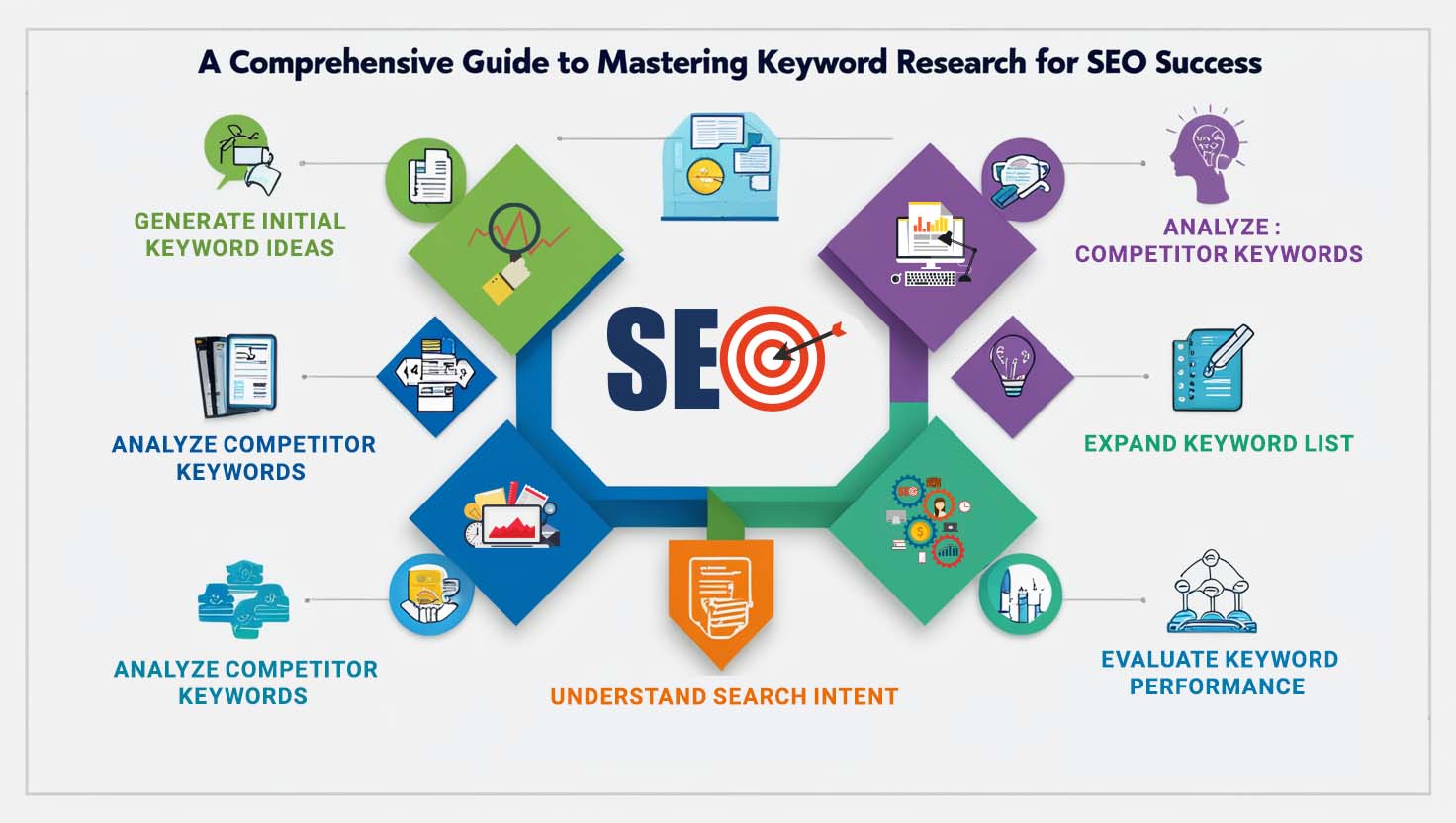A Comprehensive Guide to Mastering Keyword Research for SEO Success
July 10, 2024

Achieving high rankings in organic search results is a key goal for any website looking to increase its visibility and attract valuable traffic. One of the most effective ways to reach this goal is through strategic keyword research for SEO. By following a structured approach, you can identify the keywords that will drive the most relevant and high-quality traffic to your site. Here's a step-by-step guide to help you optimize your keyword research process.
Step 1: Generate Initial Keyword Ideas
The first step in any keyword research process is to generate initial keyword ideas. These are broad, foundational terms related to your brand, products, services, or niche. Initial keyword ideas act as the starting point for expanding your keyword list. Think about the problems your business solves and the terms people might use when searching for solutions. For example, if you run an online tech magazine, your initial keywords could include:- Technology updates
- Device evaluations
- Purchase recommendations
- Digital Magazine
- Gadget analysis
Step 2: Analyze Competitor Keywords
Analyzing what your competitors are ranking for can provide valuable insights and help identify keyword gaps. Using tools like the Keyword Gap tool, compare your site with competitors to find keywords they rank for but you don't. Each of these keywords represents an opportunity to create content that can capture additional traffic.Step 3: Expand Keyword List
With your list of initial keywords in hand, it's time to expand your keyword list by uncovering related search terms that will enrich your content. Tools like the Keyword Magic Tool can generate numerous related keyword ideas and provide valuable metrics to guide your choices. Focus on terms that are highly relevant to your niche by exploring suggested groups and subgroups.Step 4: Understand Search Intent
Understanding the intent behind a user's search query is crucial for effective keyword research. Search intent falls into four main categories:- Informational: Users seeking information (e.g., "how to grow succulents").
- Navigational: Users looking for a specific website (e.g., "Instagram login").
- Commercial: Users researching products or services (e.g., "best indoor plant fertilizers").
- Transactional: Users ready to make a purchase (e.g., "buy succulent soil online").
Step 5: Identify Long-Tail Keywords
Long-tail keywords are specific phrases that typically have lower search volumes but also lower competition. These keywords are easier to rank for and can attract highly targeted traffic. For instance, a broad term like "laptops" might have high search volume, but a more specific term like "best lightweight laptops for students" will likely bring visitors closer to making a purchase. Use tools to filter keywords by ranking difficulty and focus on those with lower competition to build a robust list of long-tail keywords. This is a very useful hack in doing keyword research for SEO.Step 6: Evaluate Keyword Performance
By now, you should have a comprehensive list of potential keywords. Not all keywords are created equal, so it's essential to evaluate their performance before deciding which ones to target. Key metrics to consider include:- Search Volume: The average number of times a keyword is searched per month.
- Keyword Difficulty (KD %): How challenging it would be to rank in the top 10 results.
- Cost Per Click (CPC): The average cost advertisers pay per click.
- SERP Features: Unique results like featured snippets or local packs.
Step 7: Group Similar Keywords
Keyword grouping involves clustering similar keywords together based on their intent and topic. This approach helps you optimize each page for multiple keywords and prevents keyword cannibalization. Use tools to automatically group related keywords, and focus on the term with the highest search volume as your primary keyword, with related terms as secondary keywords.Step 8: Prioritize Keyword Opportunities
To make the most impact, prioritize your keyword opportunities based on their potential to drive business goals. Segment your keywords according to the content marketing funnel:- Top-of-the-Funnel (ToFu): High search volume keywords for brand awareness (e.g., "what is digital marketing").
- Middle-of-the-Funnel (MoFu): Moderate volume keywords for lead nurturing (e.g., "best digital marketing tools").
- Bottom-of-the-Funnel (BoFu): Low volume but high intent keywords for conversions (e.g., "digital marketing software free trial").
Step 9: Research Your Audience
Understanding your target audience is essential for tailoring your content to their needs. Analyze competitor audiences to gain insights into demographics, socioeconomics, and online behavior. Use this information to create content that resonates with your audience and aligns with your priority keyword clusters.Bonus: Monitor Keyword Rankings
After publishing your optimized content, monitor your keyword rankings to assess the effectiveness of your SEO efforts. Tools like the Position Tracking tool allow you to track thousands of keywords, discover new opportunities, and analyze competitors' rankings. Regularly review this data to make informed decisions and continually improve your SEO strategy.
By following these steps and leveraging keyword research tools, you can streamline your keyword research for SEO process and achieve higher rankings in organic search results. Implementing a well-structured keyword strategy will drive more valuable traffic to your site and help you reach your business goals.
 Posted by
Posted by 
Comment on this post
Your email address will not be published.